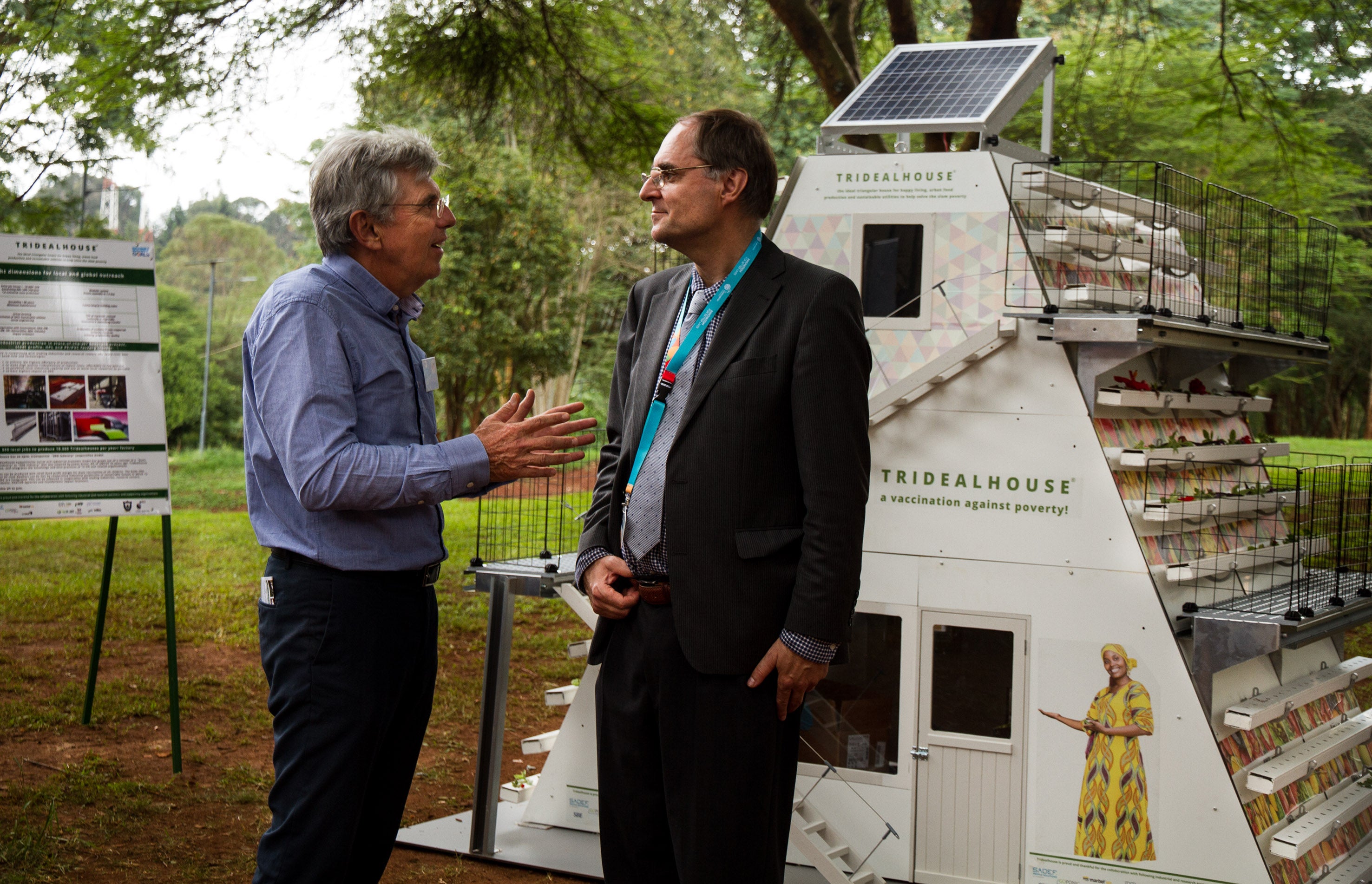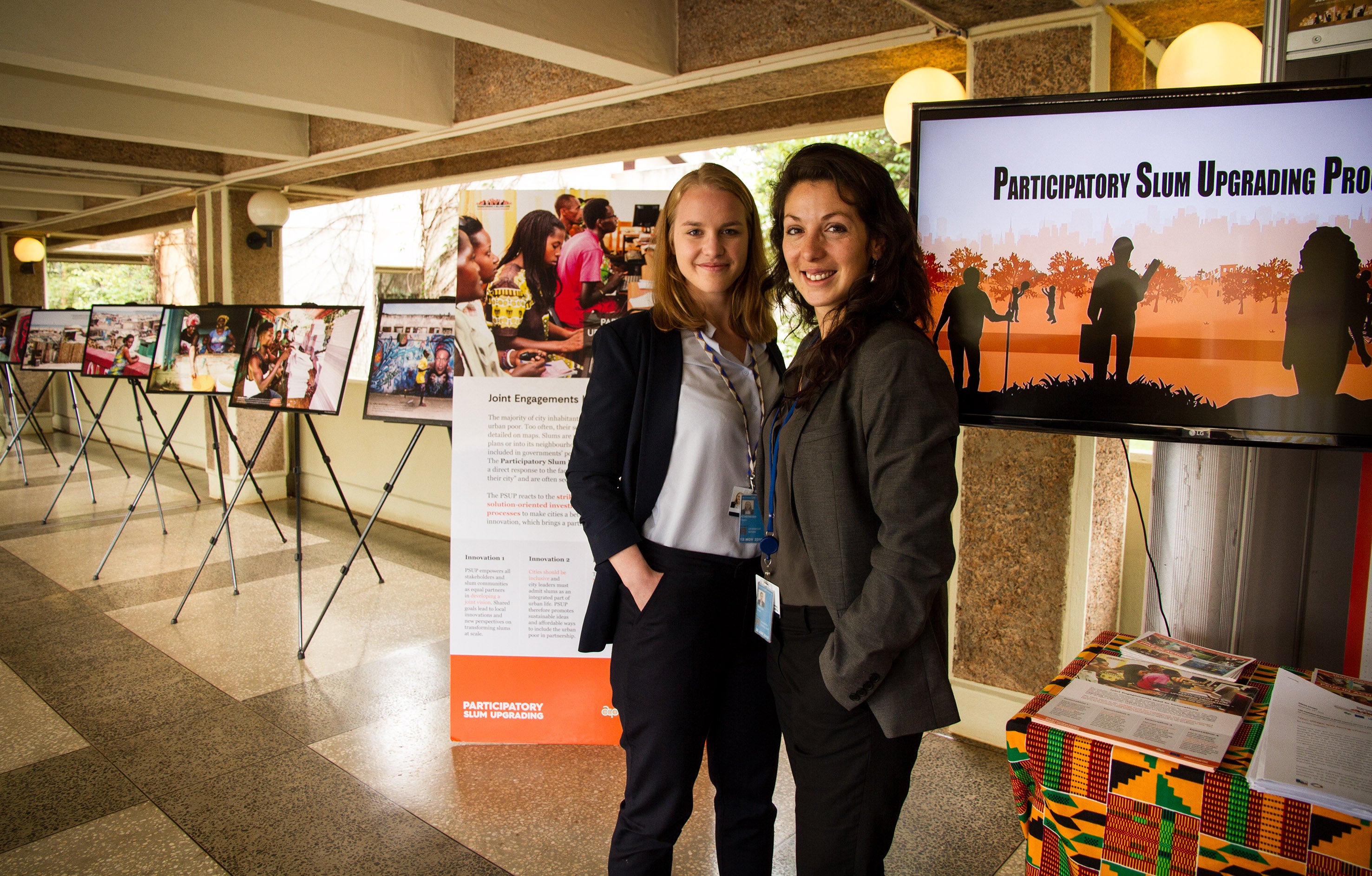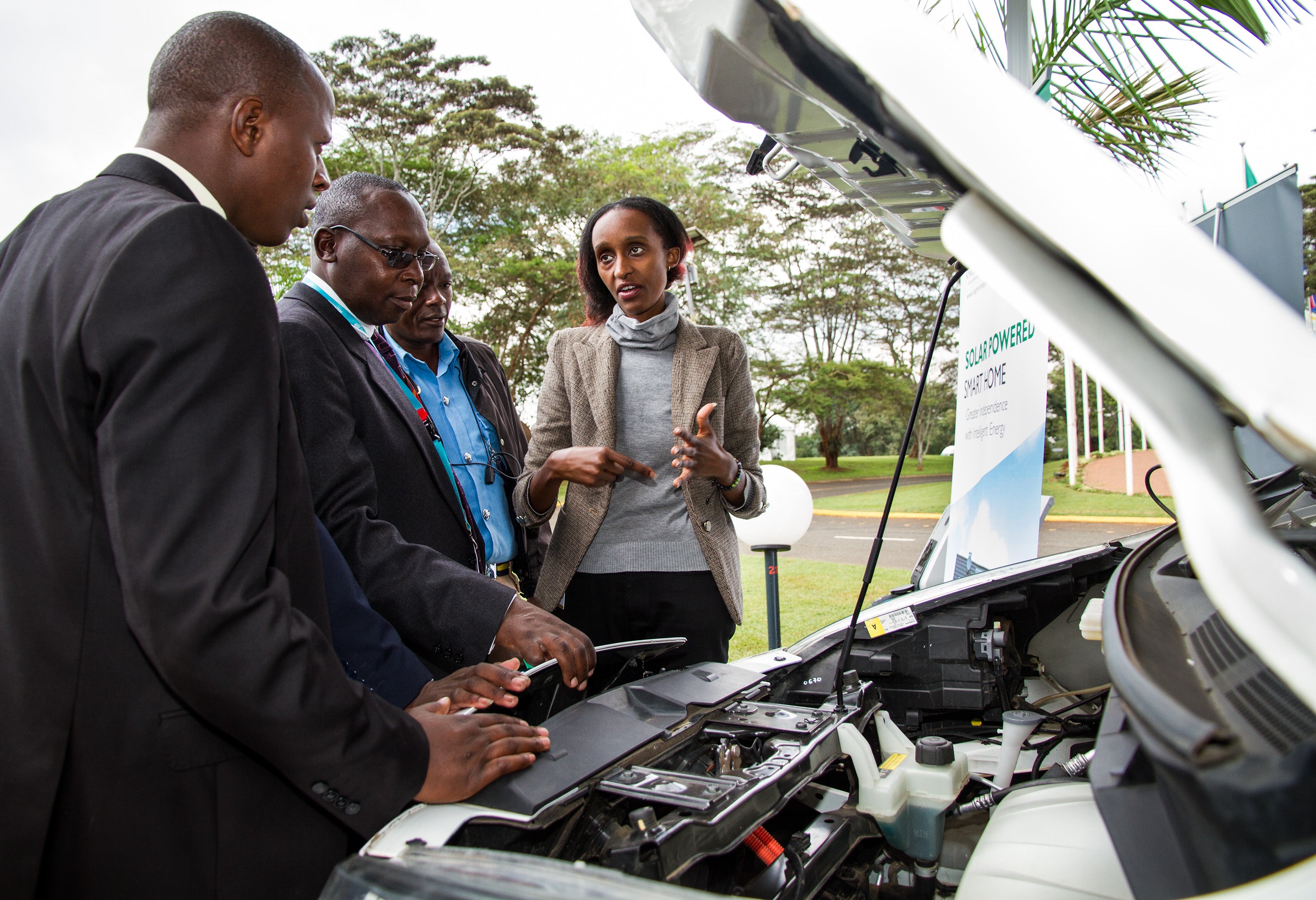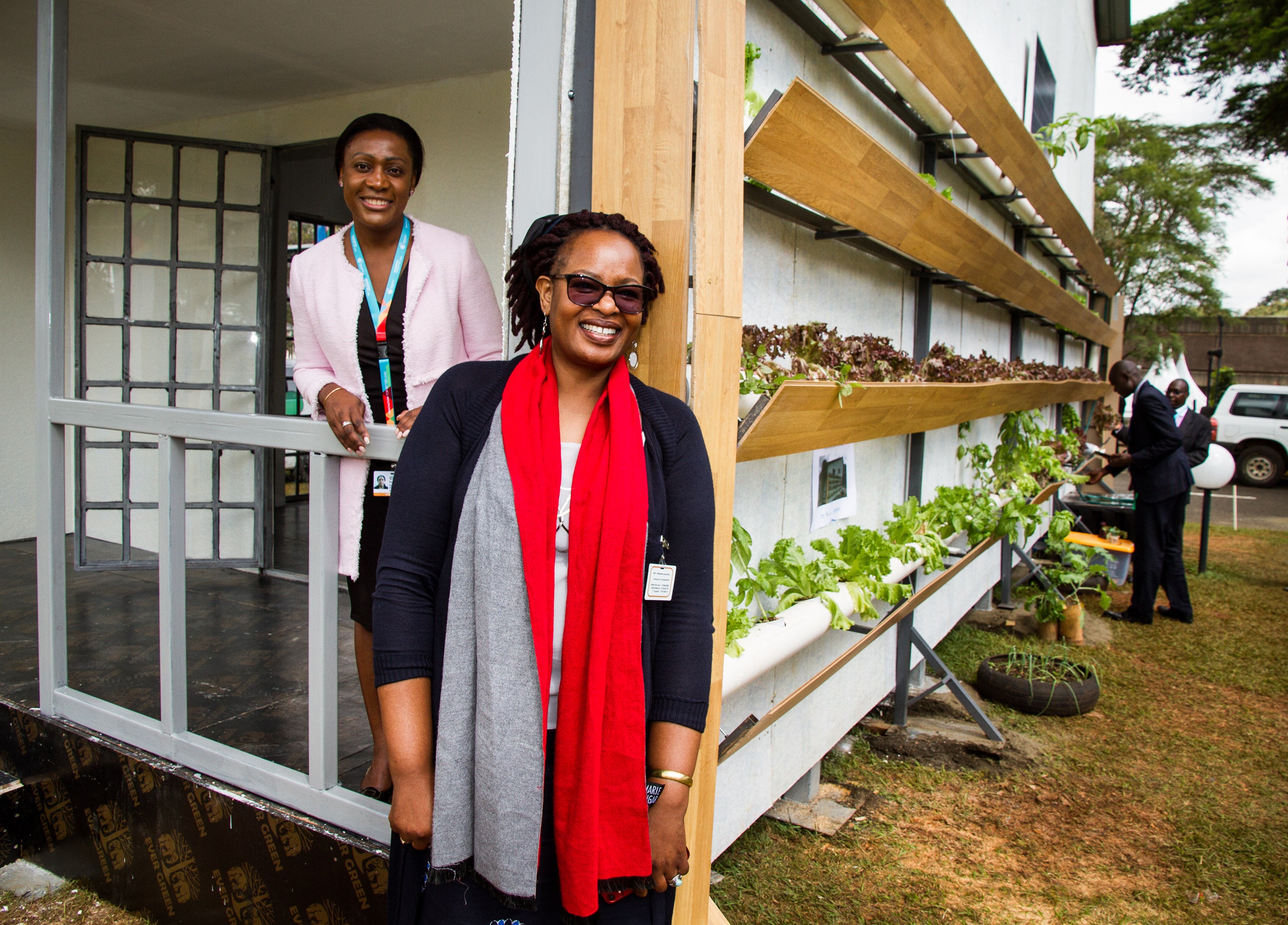NAIROBI, 29 May 2019 - What you first notice on the “Urban trail” of the first UN-Habitat Assembly is a series of powerful photographs in some of the world’s cities and those who live in them.
The stunning photos include From a tailor In Goma in the Democratic Republic of Congo’s conflict-troubled East sitting at his sewing machine in front of a ruined house, a train station In Sri Lanka, women in Riyadh, Saudi Arabia at a cinema hall and a boy in Northern Kenya’s Turkana region rolling a bicycle tyre on the harsh, dry terrain of one of the country’s most remote regions.
Hoisted above the portraits are the flags of all the United Nations Member States leading from the entrance of the Nairobi complex.

Moving into the main lobby, one gets to experience and navigate a challenging and sometimes dangerous urban environment through stories told on virtual reality
At the ONA stories stand – the audience is taken to Nairobi’s Dandora dumping site. It covers an area of 32 kilometers with thousands of tons of garbage and more than 3000 people who depend on it for their living. Some 40 years after the first garbage truck made its way there, they continue to dump over 2000 tons of waste daily. Medical and environmental experts say the site is a big health hazard for those who live around it.
“Kashe” is the guide. He’s in his twenties and tells us in the video that he depends on selling items that he finds in the dumpsite for his livelihood and to support his two children.
He explains the dangers of working in one of East Africa’s largest dumpsites.

There are also over 50 side events with topics ranging from affordable housing, the blue economy, safe cities for girls, climate change, smart cities and many others.

Receptions including Iftar for Muslims to break their fast, Youth, gender and interfaith dialogues and concerts all add a dash of colour to one of the world’s most important and complex issues - urbanization.


Article: Kathryn Wambua
Photos: Kirsten Milhahn, UN-Habitat